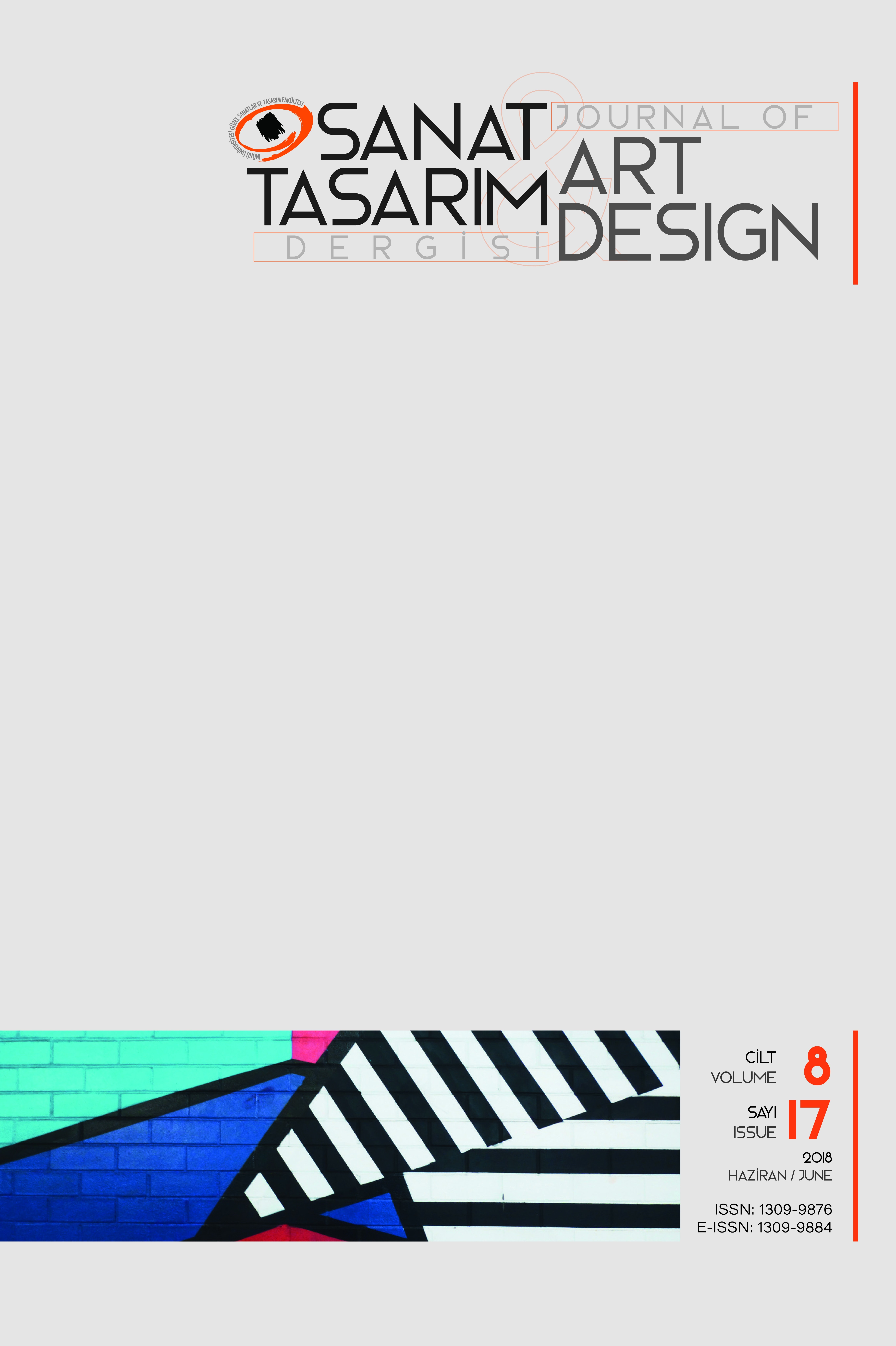Gençlere Yönelik Peyzaj Tasarımı: Trabzon Haluk Ulusoy Spor Tesisleri
Peyzaj Tasarımı, Spor Eğitim Tesisleri, Tasarım Süreci
___
- Bredow, K.W. (2006). Gathering Spaces: Designing places for adolescents, Faculty of the Virginia Polytechnic Institute and State University. Master of Landscape Architecture.
- Burkeen, E. W. ve Alston, M. A. (2001). Using recreation to prevent violence and drug abuse. Parks and Recreation, 36(3), 80-85.
- Caputo, V. (1995). Anthropology's silent ‘others’. In Amit-Talai, V, & Wulff, H., editors, Youth cultures: a cross cultural perspective. London: Routledge, 19–42.
- Checkoway, B. (1992). Young People Creating Community Change. Center for The Study of Youth Polıcy, School of Social Work, Ann Arbor, Michigan, The University of Michigan.
- Driskell, D. (2002). Creating Better Cities with Children and Youth. UNESCO.
- Fitzgerald, M., Joseph, A. P., & O’Regan M. (1995). Leisure Activities of Adolescent School Children. Journal of Adolescence 18(3,) 349-358.
- Harris, J.R. (1995). Where is the Child’s Environment? A Group Socialization Theory of Development. Psychological Review, 102, 458-489.
- Hendry, L., Shucksmith, J., Love, J.G., & Glendinning, A. (1993). Young people's leisure and lifestyles. London: Routledge.
- Kulaksızoğlu, A. (1998). Ergenlik Psikolojisi. İstanbul: Remzi Kitabevi.
- Lozano, Eduardo E. (1990). Community Design and the Culture of Cities: The Crossroad and the Wall/Cambridge. Cambridge University Press.
- Lynch, K. (1977). Growing in up in Cities: Studies of the Spacial Environment of Adolescence. Cambridge, MA: MIT Press.
- Mahoney, J.L. (2000). School Extracurricular Activity Participation as a Moderator in the Development of Antisocial Patterns. Child Development, 71, 502-516.
- Mc Avoy, L. (2001). Outdoors for Everyone: Opportunities that Include People with Disabilities, Parks and Recreation. 36(8), 24-36.
- Owens, P.E. (1994). Teen Places in Sunshine, Australia: Then and Now, Landscape Architecture Department of Environmental Design, University of California. Children’s Environments, 11, 4.
- Özdemir, A. & Vural, B.K. (2015). Yaşlıların Doğa/Bahçe Algıları Üzerine Bir Araştırma: Denizli Örneği. İnönü Üniversitesi Sanat ve Tasarım Dergisi 11, 65-77.
- Piko, B.F.& Vazsonyi, A.T. (2004). Leisure Activities and Problem Behaviors among Hungarian Youth. Journal of Adolescense 27. 717-73.
- Pratt, M. W., Hunsberger, B., Pancer, S. M. & Alisat, S. (2003). A Longitudinal Analysis of Personal Value Socialization: Correlates of Moral Self-ideal in Adolescence. Social Development, 12: 563–585.
- Reiss, D., Plomin, R., Hetherington, E. M., Howe, G. W., Rovine, M.,Tryon, A. & Hagan, M. S. (1994). The Separate Worlds of Teenagesiblings: An Introduction to the Study of the Nonshared Environment and Adolescent Development. In E. M. Hetherington, D. Reiss, & R. Plomin (Eds.), Separate Social Worlds of Siblings: The Impact of Nonshared Environment on Development, (63-109). Hillsdale, NJ: Erlbaum. Retherford, R.
- Roberts, K. & Parsell, G. (1994). Youth Cultures in Britain: the Middle Class Take-over. Leisure Studies, 13, 33-48. URL1 – www.google.com/maps,2015.
- Versteeg, E. (2003). Planning and Design of Open Space to Promote Adolescent Development. Master of Landscape Architecture, the University of Guelph.
- West, P., & Sweeting, H. (1996). Nae Job, Nae Future: Young People and Health in a Context of Unemployment. Health & Social Care in the Community 4, 50-62.
- Witt, P.A. (1992). Factor stability of leisure behavior for high school age youth in three communities. Journal of Leisure Research 3, 213–219. Yahaya, M. K. (2003). Determinants of Youth Participation in Change Programmes in Rural Nigeria. Antropologist, 5(3), 101-106.
- Yaşar, Y. & Düzgüneş, E. (2013). Peyzaj Tasarımına Sürdürülebilirlik Kavramının Entegrasyonu: Bir Stüdyo Çalışması, İnönü Üniversitesi Sanat ve Tasarım Dergisi 7:31-43.
- Yılmaz, S. (2015). Bir Kampüs Açık Mekanın Çevresel Tasarımı: Süleyman Demirel Üniversitesi Orman Fakültesi Binası, Kastamonu Üniversitesi Orman Fakültesi Dergisi 15(2), 297-307.
- Yılmaz,T., Zırhlıoğlu, B. & Olgun, R. (2013). Üniversite Yerleşke Alanlarında Su Kullanımlarının İncelenmesi: Akdeniz Üniversitesi Örneği. İnönü Üniversitesi Sanat ve Tasarım Dergisi, 7, 13-21.
- ISSN: 1309-9876
- Başlangıç: 2011
- Yayıncı: İnönü Üniversitesi
Lif Sanatının Öncülerinden Ed Rossbach
Yaşlı Bireylerin Park Kullanım Tercihleri Üzerine Bir Çalışma
Tahsin Yılmaz, Rıfat Olgun, Faik Şavklı
Malatya İmam Zeynel Abidin Türbesi Alevi Cemleri ve Müzik
Derya KARABURUN DOĞAN, Zafer KILINÇER
Kahramanmaraş Sütçü İmam Üniversitesi Avşar Yerleşkesinde Trafik Gürültüsünün İncelenmesi
Ekolojik Sürdürülebilirliğin Konut Tasarımında Değerlendirilmesi
ÇAĞDAŞ KENT MİMARİSİNDE SERAMİK PANOLAR VE İNÖNÜ ÜNİVERSİTESİ KONGRE VE KÜLTÜR MERKEZİ UYGULAMASI
Malatya’da Canlı Müzik Yapılan Kafelerin Sosyolojik Analizi
Tarih ve Hafıza Kavramları Üzerinden Türk Resmine Bir Bakış
Duygu SABANCILAR, Serkan ÇALIŞKAN
Beste Karakaya Aytin, Pınar Kısa Ovalı
Donatı Elemanlarının Fonksiyonel Ve Tasarım Özelliklerinin Değerlendirilmesi
